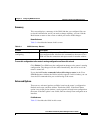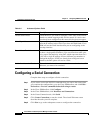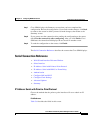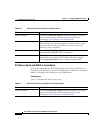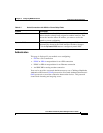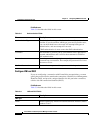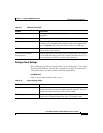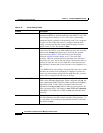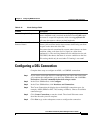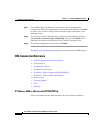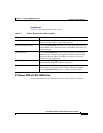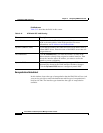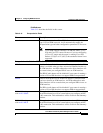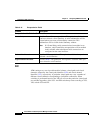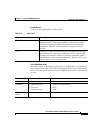
5-13
Cisco Router and Security Device Manager 2.5 User’s Guide
OL-4015-12
Chapter 5 Configuring WAN Connections
Configuring a DSL Connection
Configuring a DSL Connection
Complete these steps to configure an ADSL, or G.SHDSL connection:
Step 1 If you want to review the IOS CLI commands that you send to the router when
you complete the configuration, go to the Cisco SDM toolbar, and click Edit >
Preferences > Preview commands before delivering to router.
Step 2 In the Cisco SDM toolbar, click Configure.
Step 3 In the Cisco SDM taskbar, click Interfaces and Connections.
Step 4 The Create Connection tab displays the available DSL connection types, for
example, ADSL (PPPoE or RFC 1483 routing or PPPoA). Choose an available
connection type.
Step 5 Click Create Connection to start the wizard. The wizard Welcome screen
describes the tasks you will complete.
Step 6 Click Next to go to the subsequent screens to configure the connection.
Remote Loopback Requests This field specifies whether the router will go into loopback mode
when a loopback code is received on the line. Choosing full causes
the router to accept full loopbacks, while choosing payload-v54
will cause the router to choose payload loopbacks.
Enable Generation/Detection of
Remote Alarms
Check this box if you want the router T1 link to generate remote
alarms (yellow alarms) and to detect remote alarms being sent from
the peer on the other end of the link.
The remote alarm is transmitted by a router when it detects an alarm
condition: either a red alarm (loss of signal) or a blue alarm
(unframed 1s). The receiving channel service unit/data service unit
(CSU/DSU) then knows that there is an error condition on the line.
This setting should only be used when T1 framing is set to esf.
Table 5-10 Clock Settings Fields
Element Description



